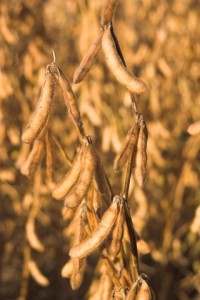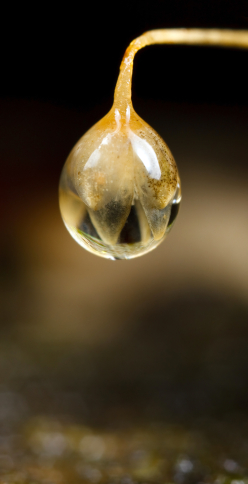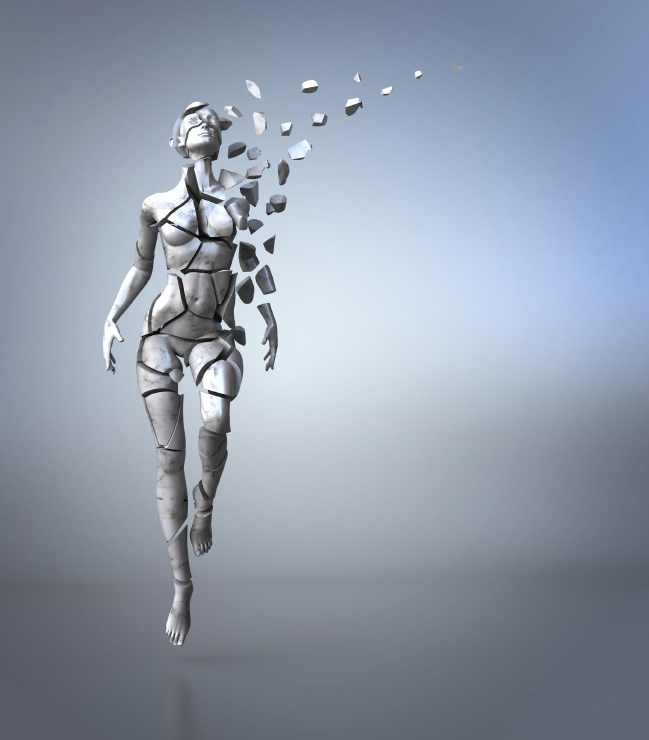Newsflash: What’s the latest on soy?
Does it or doesn’t it? That is, does soy relieve menopausal hot flashes or not?
The evidence has been less than definitive however, researchers now say that trials examining the benefits or lack thereof of soy in attenuating symptoms may have been negatively affected by significant limitations, such as failing to recognize treatment timing and duration on effectiveness, small numbers of women in the studies and wide variations in how much hot flashes were reduced with treatment. And so, they took another look at the data using a new model, one that allows scientists to actually compare different treatments and evaluate the effectiveness of different factors, including dose, duration of treatment and formulations. This is an important method of analysis and one that could truly be considered a game changer. They say that their findings, published online in the British Journal of Pharmacology, will provide “information for deeper understanding of the efficacy of soy isoflavones on menopausal hot flashes.”
I am going to skip over the science mumbo jumbo and get right to the meat of how they came to their ultimately conclusions:
- Findings were based on an analysis if 16 studies published between 1998 and 2012 enrolling over 1700 subjects.
- In terms of duration, the effect of soy isoflavones were studied for anywhere from 4 weeks to two years, with a median of 12 weeks.
- In these studies and vis a vis modeling, soy isoflavones were compared to both placebo and estradiol, the latter in terms of how long it takes to reach effectiveness. This last point is important.
And now, the result.
While the effect of isoflavones on hot flashes was superior to placebo, the researchers still observed a relatively strong placebo effect at play. Importantly, however, the placebo effect at play was even higher in trials examining estradiol and hot flashes. The reason? Apparently, women might have lower expectations when it comes to alternative therapies like soy. Yet, there was still another important finding that was teased out by this new modeling:
Soy isoflavones require at least 13.4 weeks to reach at least half of their full level of activity in the body. In comparison, estradiol only needs about 4 weeks. So, when you do the math, at four weeks (which is the usual length of most clinical trials of this nature), estradiol has reached 80% of its peak activity level and soy isoflavones, only 47%. By 48 weeks, soy isoflavones catch up.
Additionally, as I’ve written time and again, there are different components of soy with differing levels of effectiveness. Genestein is the strongest and yet, only three studies specifically looked at soy agents that contained genestein only. So, there was no way for the researchers to break down the findings by components.
Overall, the key takeaway is that it takes longer for soy to reach maximum effectiveness than it does estrogen. So, if we are going to quantify value moving forward, it’s important to account for this significant distinction.
When it comes to soy, it may simply be that slow and steady wins the race.
Read MoreIso what? Iso who? Hot flashes, isoflavones and clinical trials
 I’ve long been intrigued by the replacement of hormone replacement therapy with soy isoflavones. Yet, studies looking at their effectiveness for alleviating hot flashes and other vasomotor symptoms have been mixed. The reasons for this are multiple, and point to such factors as dose and actual composition of the supplements used, severity of hot flashes and how often women are taking isoflavones over the course of the day. Researchers have also discovered that only 20% to 30% of Westerners produce equol, (there’s even a dispute over this stat) a component of the potent isoflavone dadzein that has an affinity for estrogen and appears to be slowly cleared from the body;(note that both of these factors contribute to its beneficial effect against flashes.
I’ve long been intrigued by the replacement of hormone replacement therapy with soy isoflavones. Yet, studies looking at their effectiveness for alleviating hot flashes and other vasomotor symptoms have been mixed. The reasons for this are multiple, and point to such factors as dose and actual composition of the supplements used, severity of hot flashes and how often women are taking isoflavones over the course of the day. Researchers have also discovered that only 20% to 30% of Westerners produce equol, (there’s even a dispute over this stat) a component of the potent isoflavone dadzein that has an affinity for estrogen and appears to be slowly cleared from the body;(note that both of these factors contribute to its beneficial effect against flashes.
Despite these challenges, what would happen is you simply upped the dose and/or frequency? Would it change the’ iso what’ or ‘who’ to an actual ‘iso yes!?’
That’s exactly what researchers sought to learn when they recruited 130 peri- and post-menopausal women with severe hot flashes (i.e. five or more a day). Women who produced equol and those who did not were separated and then randomly asked to take placebo, low dose (33 to 66 mg/day) or high dose (110-200 mg/day) equol or placebo capsule (s) and take them once daily or two to three times daily. They also kept daily hot flash diaries, assessing each hot flash by its intensity, daytime or nighttime occurrence and how bothersome they were. They met with the research team face to face twice — 9 weeks in, and 3 weeks after the study completed.
The findings made it quite clear that dose and frequency are almost as important as whether or not a person is able to produce equol. In fact, when women took higher doses of isoflavones more frequently, they had 2.4 per day fewer hot flashes than women taking the lower doses just once a day. And, the flashes were significantly less severe. What’s more, most of these benefits were realized during the night, when, as most of us know, flashes and sweats are especially disruptive. Moreover, there was not much of a difference between women who are able to produce equol and those who are not; while these women did experience greater declines (as much as 10%) in both how intense their flashes were and how frequently they occurred, the difference was apparently not statistically significant.
So, let’s cut through the scientific clutter:
- Higher doses of isoflavones tend to have a greater effect than lower doses
- More frequent dosing (two to three times a day) appears to be more beneficial than once a day dosing.
- Greater benefits are likely to be seen in women who naturally produce equol, especially when it comes to hot flash intensity
- Both perimenopausal and menopausal women may potentially benefit from higher, more frequent dosing.
This type of research is just beginning and the findings need to be teased out in larger numbers of women. It’s also unclear if spreading the lower dose out throughout the day would make a difference. Still, what these findings do bring to light is an evolution of thinking and that’s what makes me most excited. Rather than determining that isoflavones are useless, researchers are finally starting to treat them as though they were pharmaceutical agents, using them in randomized clinical trials, varying doses, frequency and patient populations and truly, thinking outside the box.
Read More
Wednesday Bubble: Soy takes a hit (again). But what about S-equol?
Soy is back in the news again, with newly published data suggesting that isoflavones may not be particularly effective when it comes to menopausal symptoms. But I can’t stress enough on this blog that sources are as important as substance; in other words, not all sources are equal and neither are the women who use these alternatives.
So, let’s talk again about S-equol. But first, a bit of context is needed.
We know that soy isoflavones, primarily genistein, daidzein and glycitein have been suggested as an effective strategy for combating menopausal symptoms such as hot flashes or night sweats. The beneficial effects of soy are believed to be associated with the ability to soy isoflavones to attach themselves to estrogen receptors. Importantly, our brains contain certain estrogen receptors in hippocampus, which is responsible for consolidating both short and long-term memory and spatial navigation. Moreover, both genistein and daidzein have been shown to have a particular affinity for the very type of estrogen receptors that reside in the hippocampus, which is why researchers have been so interested in determining if ingesting soy can help combat the natural decline in memory and cognition. While findings have been mixed, some women appear to be better metabolizers of S-equol, a metabolite of a major soy isoflavone called daidzein. It has a particular affinity for estrogen receptors and possesses some estrogen-type activity of its own. S-equol is produced in the GI tract however the ability to actually manufacture it depends on the presence of certain microflora. Consequently, only 30% to 60% of individuals are actually able to produce S-equol on their own (although this figure is believed to be higher among Asians and vegetarians).
I’ve been writing about S-equol for a number of years and you can revisit those posts here. Interest in S-equol is in part, related to its potential for augmenting the benefits of isoflavones; in fact, it is possible that women who are naturally producers of S-equol actually experience greater effects from soy products, and this is especially true when it comes to bone health. Hence, vasomotor symptoms — night sweats and hot flashes — aside, you may not want to give up on soy just yet.
So let’s talk bone health. It’s so critical as we age.Declining levels of estrogen are a primary cause of bone loss and resulting osteoporosis in women; indeed, one in five American women over the age of 50 have osteoporosis and about half will experience a fracture in the hip, wrist or spine as a result. What’s more, because osteoporosis is silent in its early stages, causing no symptoms, it’s critical that bone loss is halted or at least slowed either before or during the most critical phases strike. There is no time like the present to take preventive measures, even if you are in your 30s and 40s.
Where does S-equol fit in?
Last year, researchers demonstrated the daily S-equol supplements taken by women who are not naturally producers of S-equol, may improve bone metabolism and attenuate bone loss. And I reprinting this information because it’s too early for a soy verdict.
In this 1 year study of 356 healthy, postmenopausal Japanese women between the ages of 41 and 62, daily intake of 10 mg S-equol via supplement markedly reduced markers of bone resorption in blood and urine compared to women taking placebo pills or 2 mg or 6 mg of S-equol daily. In fact, in women taking the 10 mg dose for a year, declines in a urinary marker of bone resorption (i.e. DPD) were roughly 21% greater compared to placebo. Measures of whole body bone mineral density also showed that S-equol supplementation protected against bone loss, although not to the extent as bone resorption. These results remained even after changes in height, weight, body mass index, lean and fat mass were accounted for. No participant experienced serious side effects from taking S-equol and hormone levels were not adversely affected.
Does this mean that you should rush out and purchase S-equol supplements?
One of the primary limitations of this study is that the process of bone recycling can take as long as 18 months and the time required to complete a cycle may actually increase with age. Thus, the duration of time that the women were studied might be too short to draw any definitive conclusions. Hence, you may want to wait before you start taking S-equol. However, the evidence that’s building continues to put the weight on the benefits versus risks side. Only time will tell. Meanwhile – remember that the source of S-equol is important. If you are going to look for supplements, go for products that state that they are standardized on the label. Food sources, e.g. tofu, are always a good bet but again, not every woman will metabolize soy the same way. Still, here’s to yourhealth. Keep on doing all you can do to keep the faith and stay the course.
It ain’t over til the fat lady stops sweating!
Read MoreWednesday Bubble: your brain on soy
Aging and estrogen. Gotta love it. It can signify the loss of reproduction, skin elasticity, vaginal lubrication, bones and even parts of our brain, at least hypothetically. Yet, can ingesting soy help improve attention, focus, problem solving and memory? A newly published study in Neurology journal counters claims that it can, but adds further evidence that certain factors may influence benefits, such as reproductive age or if menopause comes on naturally or not.
A bit of context is needed. We know that soy isoflavones, primarily genistein, daidzein and glycitein have been suggested as an effective strategy for combating menopausal symptoms such as hot flashes or night sweats. The beneficial effects of soy are believed to be associated with the ability to soy isoflavones to attach themselves to estrogen receptors. Importantly, our brains contain certain estrogen receptors in hippocampus, which is responsible for consolidating both short and long-term memory and spatial navigation. Moreover, both genistein and daidzein have been shown to have a particular affinity for the very type of estrogen receptors that reside in the hippocampus, which is why researchers have been so interested in determining if ingesting soy can help combat the natural decline in memory and cognition. While findings have been mixed, some women appear to be better metabolizers of S-equol, which is related to daidzein, produced in the gut and targets estrogen receptors in beneficial ways that other soy isoflavones do not. If you click on the links posted above, you will find a wealth of information on soy and the research that has been done.
In this particular study, healthy, postmenopausal women received either 25 g daily of isoflavone-rich soy protein (more than 3/4 of which contained genistein and daidzein) or milk-protein daily; both were offered in the form of a powder or bar. Over the next two and half years, the participants visited the clinic at various intervals to participate in tests that measure their cognitive skills, including:
- Executive function (working memory, expression, general intelligence), and,
- Verbal learning, verbal memory and visual memory.
Although the women were not required to change anything about their diet, they were asked to refrain from taking soy supplements over the study course.
The findings? Researchers failed to observe any differences in cognitive function between women taking soy and women taking milk protein, even though scores did improve over the two+ year time period. Yet, they did note differences in improvements in visual memory scores, with women in the soy isoflavone group better able to recall faces both immediately and with a short delay compared to their milk protein peers. The group of younger, postmenopausal women in the study did not appear to have any advantages over the older women (note that age range was as broad as 49 to 94 years).
So, what to make of this? Is your brain on soy an improvement? Apparently, not really. What the researchers do say, however, is that surgical menopause may eventually cause a larger decline in cognitive function over time (these group of women actually showed a worsening in cognition regardless of whether or not they took soy). They also note that soybeans contain active constituents other than isoflavones (e.g. lignans) that may boost or detract from isoflavones effect on cognition.
Still, there is a wee bit of a silver lining. Although it’s true that if you are seeking a better functioning brain, you may wish to look elsewhere, a high soy diet can be consumed without fear of any adverse effects on memory skills that are associated with dementia in later life, and may possibly even improve them. The verdict is still out for women who are naturally high S-equol producers. In so far as hot flashes and night sweats? The evidence looks much better.
Estrogen’s a bitch, isn’t it? But who says that the bitch can’t be tamed or at least, kept at bay?!
Read More
Crow’s feet? What crow’s feet?!
Crow’s feet. Most of us start to develop them in our mid to-late 30s and by the time we reach the age of 50, they’re pretty pronounced. This is no surprise because aging skin is associated with a decline in elasticity and moisture. And, let’s face it, if you grew up with light-coloured eyes like I did, you have an even greater tendency to squint in bright light, another factor contributing to those tell tale lines around the eyes. In women in particular, crow’s feet are a rule and not an exception, as aging is accompanied by a loss of estrogen, which has been linked with as great as a 30% loss of collagen in the dermis (the thick, sturdy layer of connective tissue that comprises about 90% of the skin’s thickness) within the first five years of menopause. Collagen, which is the most abundant protein in the body, is responsible for skin’s durability and strength. As it declines, skin starts to sag and wrinkles form. Oh, happy day!
Unfortunately, researchers continue to debunk claims that replacing estrogen can improve the skin’s appearance. That’s the bad news. Likewise, don’t look for expensive moisturizers or facials to do the trick either. However, there are data that suggest that intake of soy isoflavones may improve aging skin. And once again, S-equol is the winner in the isoflavone antiaging department.
A bit of background…
If you are new to Flashfree, you may be unfamiliar with S-equol. Briefly, S-equol is a metabolite of a major soy isoflavone called daidzein. It has a particular affinity for estrogen receptors and possesses some estrogen-type activity of its own. S-equol is produced in the gastrointestinal tract however the ability to actually manufacture it depends on the presence of certain microflora there. Consequently, only 30% to 60% of individuals are actually able to produce S-equol on their own (although this figure is believed to be higher among Asians and vegetarians). (You can read a full range of posts on S-equol here)
Because skin cells responsible for producing collagen express estrogen, researchers believe that S-equol and its affinity for estrogen receptors may impact skin very similar to the way that estrogen does. In fact, when 101 Japanese menopausal women randomly took 10 mg or 30 mg standardized S-equol (SE5-OH) or a sugar pill daily for 12 weeks, that is exactly what they found. Even more interesting was the fact that S-equol was studied in women who do not produce it naturally in their bodies (even though s-equol producers are believed to gain greater benefit from soy products).
Over weeks, researchers measured numerous skin parameters, including crow’s feet, wrinkles, the degree that the skin was hydrated, skin elasticity and loss of water through the skin. To equalize the playing field, measurements were taken in a room that was the same temperature and humidity level each time, and women were instructed to remove any cosmetics using the same cleansing foam 20 minutes before each exam. They were also advised not to alter anything about their diet or sun exposure during the study period.
The findings?
Both 10 mg and 30 mg daily standardized S-equol significantly improved crow’s feet wrinkles/reduced the total wrinkle area compared to placebo tablet. And, 30 mg daily dose also significantly decreased wrinkle depth as well. What’s more, ingesting S-equol supplements did not appear to affect uterine or breast tissues or hormone status, indicating that unlike hormone replacement, using S-equol to combat declining estrogen levels is safe.
So, how does it work?
Although researchers say that the need a longer observation period to confirm S-equol action on skin, they believe that like hormone therapy, it gradually boosts the quantity and quality of skin collagen, and may even help preserve skin hydration from within. Additionally, because skin aging does not solely rely on estrogen levels, S-equol may also act as an antioxidant and help transport nutrients to the upper and middle skin layers. And more importantly, other studies have shown that when Japanese,White, Hispanic and African-American women were compared, the Asian women had the least amount of wrinkling and sagging. If you translate the findings and consider the degree of differences in wrinkling among ethnic groups, it is very possible that S-equol may benefit women living in the U.S. even more than their Japanese peers.
Is it possible that S-equol is truly a Fountain of Youth is in pill form? Yikes! This is pretty darn exciting! Me? I’m off to the store in search of standardized S-equol. Crow’s feet? What crow’s feet?!
Read More









